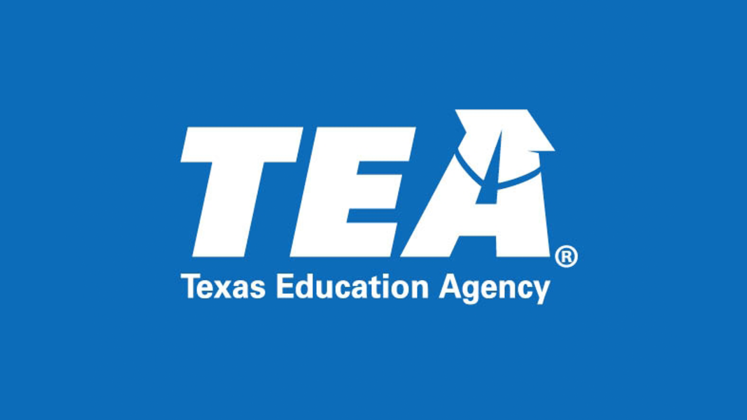Public school districts across the state are facing lower state-assessed letter grade ratings from the Texas Education Agency (TEA), officials pointing to an overhaul of the A-F accountability system to blame for the downgrades on the doorstep. In Southeast Texas, many districts are also coupling the concerns of diminished marks with massive funding decreases.
According to information from Superintendent Dr. Rickie R. Harris, even the stellar-assessed West Orange-Cove CISD is bracing for lower marks than the “B” rating received in 2022.
“Due to many changes in the accountability system, there is a possibility that we will experience a two-grade letter drop as a district,” Harris reported. “Under the new system, we will be rated lower despite performing better on the STAAR test this year in many areas.
“For example, our high school had gains in every area on the STAAR exam but will likely be rated a letter grade lower than last year.”
TEA, which oversees the state’s accountability ratings and assigns letter grades for schools and districts based on the scores they earn for student performance, has altered the method of distribution for this year, school district officials note. Like in years past, three areas are measured: students’ readiness for college or career, State of Texas Assessments of Academic Readiness (STAAR) standardized test grades, and graduation rates. Under the new accountability ratings system updates, TEA raised the “A”-rated college, career and military readiness (CCMR) score from 60% to 88%, realigned qualifiers, and introduced a retroactive review of 2022 graduates. Even under the old system, for the 2021-2022 school year, Lumberton ISD received an overall “B” grade, along with Vidor ISD, Kountze ISD, Hardin-Jefferson ISD, Bridge City ISD, Orangefield ISD and Port Neches ISD; Silsbee ISD and Port Arthur ISD received “C” ratings; and Beaumont ISD was “Not Rated.”
Igor Gusyakov, assistant superintendent for Curriculum and Instruction for Lumberton ISD, said TEA making several large changes to the STAAR exam, the so-called “STAAR Redesign,” will be hard on everyone at first.
“These changes, though needed, might at first show a drop in how well students seem to be doing because of the new format,” he said. “In addition, on the accountability side, the big change starting with the 2023 accountability system is the major shift in the cut points for CCMR performance scores.
As explained in detail by Beaumont ISD Superintendent Dr. Shannon Allen, the CCMR requirements are retroactive; the ratings will be applied to students that have already graduated, Allen said, “since the data is lagging.” From 2017-2022, if 60% of graduates from a high school were found to achieve CCMR, the school got a score of 90, which earned an “A” from the TEA.
Under the new rules, the same CCMR achievement rate will only earn a 67 – a grade of “D.” Also, from 2017-22, a school district’s score – and corresponding letter grade – was calculated by combining all student scores, as if the district were one big school. Under the new rules, the district rating for 2023 will instead be a compilation of the scores earned by each campus in the district. Each school will contribute a percentage of the district’s rating based on the size of the school.
“This change in the grading scale is different from the rules used when students graduated in 2022, much like a teacher changing the grading rules after students turn in their projects,” Gusyakov said.
Gusyakov noted that TEA will also give extra points to school districts for students who, after failing the STAAR exam before, were enrolled in accelerated instruction and passed the exam this year. According to the assistant superintendent, the way school districts are graded within the “Closing the Gaps” domain is also being changed.
“The new system will only focus on how the districts have reached goals for the lowest-scoring student groups, which include bilingual learners, special-needs students, and foster children,” he explained. “The changes leading to this include dropping the minimum number of students in a specific group at a school from 25 to 10, and shifting from a pass/fail grading system to a 0-4 ranking based on progress toward goals.”
Gusyakov added that the big changes are causing significant delays in giving results/ratings to school districts, which will slow down the making of district and school improvement plans. Although the A-F grades are usually assigned by mid-August, this year’s designations are not anticipated until late September due to changes in STAAR standardized tests, another factor in the TEA letter grading system.
“As a result, school districts will start the new school year without knowing how they did last year, which could get in the way of instructional planning and support for students,” said Gusyakov.
“The changes in the system come coupled with a more rigorous STAAR assessment and updated standards that create a more challenging year for districts and accountability,” BISD’s Allen said. “In essence, the changes to both the accountability system and the STAAR assessment can be categorized as a perfect storm.”
Allen said campuses that improve in student STAAR performance may still receive lower ratings due to the changes in the new accountability system.
“As a district, Beaumont ISD improved student achievement and campus-level performance in 2022. It is frustrating to see the game change for accountability when progress is being made,” Allen added. “We are awaiting the 22-23 school year performance, but anticipate that, due to the changes, ratings will look different.”
Allen’s challenges at BISD are added to an enrollment decline over the end of last school year’s numbers – as of Friday, Aug. 15, BISD reported 16,215 enrolled; Allen said 16,745 students were enrolled at the end of last school year. Additionally, no headway has been made to recoup an excess of $6 million lost due to “inaccurate “ property assessments on the local level.
“We did not receive our local values,” Allen said, pointing to a $6.1 million deficit and October court hearing to fight for it. “State administrators assessed the local value of property well in excess of the county appraisal district’s numbers,” resulting the multimillion-dollar depletion of state funding.
Vidor ISD Superintendent Jay Killgo said the new A-F accountability system will likely result in a lower grade for his district and some campuses, as well, based on the TEA’s preliminary analysis of what the new ratings would be using the new system with last year’s data that showed a decline.
“We are going to maximize learning and strive for our best no matter the accountability system,” Killgo said. “Our district seeks to meet the needs of our students and I feel confident that our hard work will be reflected in improving accountability ratings moving forward.”
West Orange Cove’s Harris reported that his district believes the so-called “A-F Refresh” will place an unnecessarily negative light on the efforts of their students and staff in the eyes of the community. And, as reported throughout Texas, 234 school districts sent letters to Gov. Greg Abbott, TEA, and Senate and House education committees circa March of this year, asking elected officials to re-evaluate the district rating system changes, to no avail.
“It is estimated that 66% of the districts in the state will see at least a letter grade drop in their accountability rating,” Harris remarked. “I felt it is only right by the students and staff of our district to inform the community that these changes are not due to the district performing worse but that the rating system has changed.”
“At this time, we do not have any comments regarding the STAAR redesign and do not know how the redesign will impact district accountability,” said Kelly McBride, associate executive director of the Region 5 Education Service Center.








